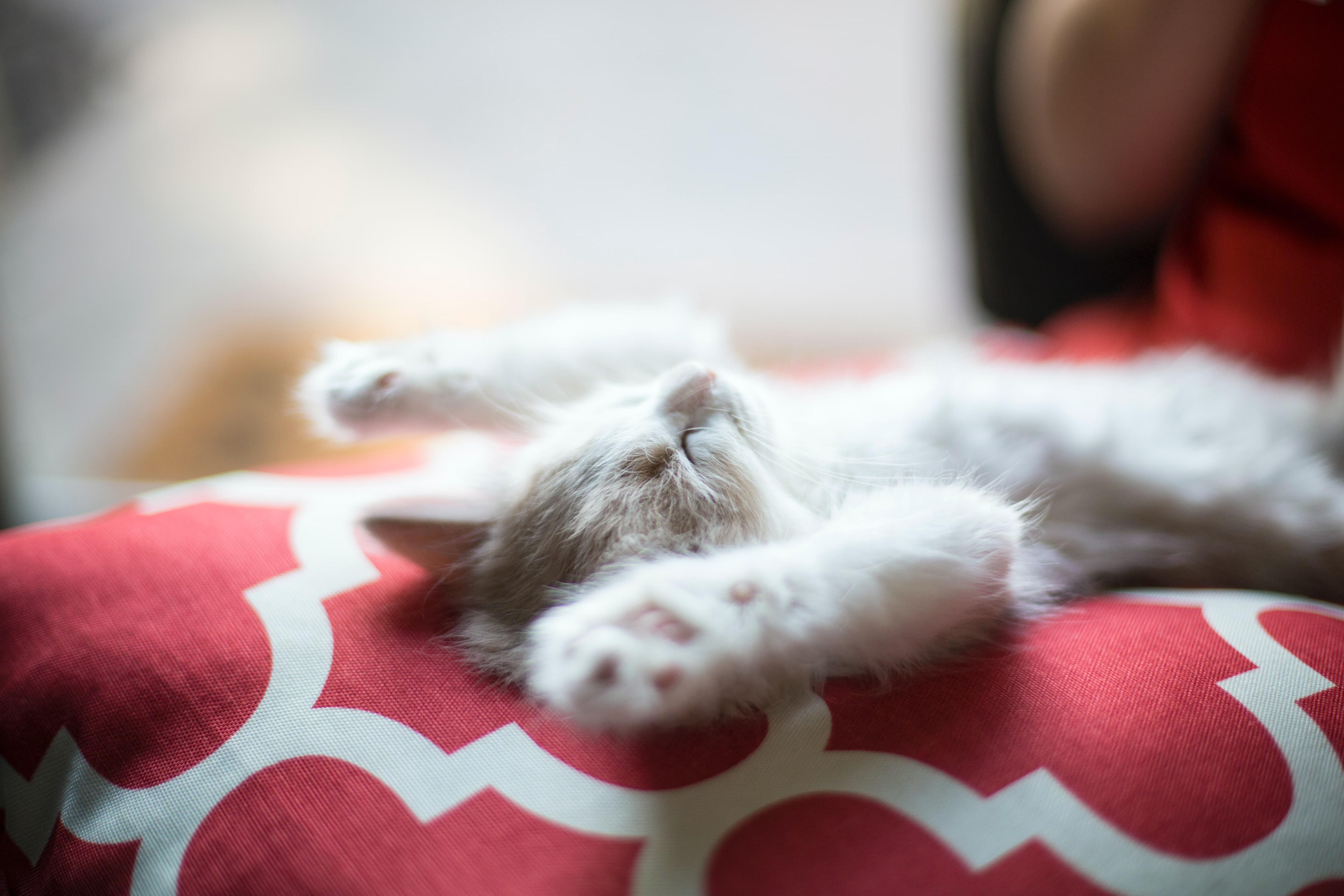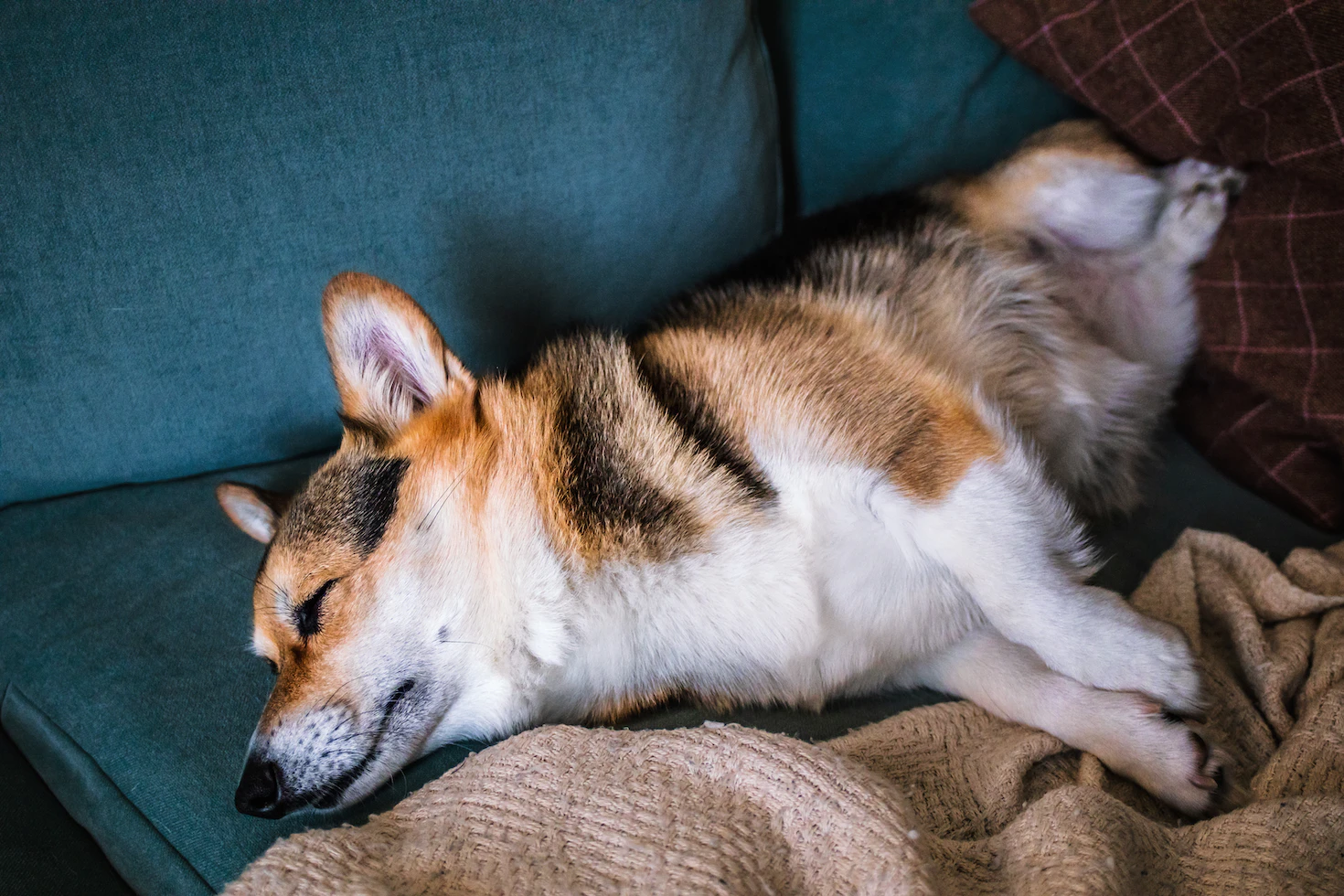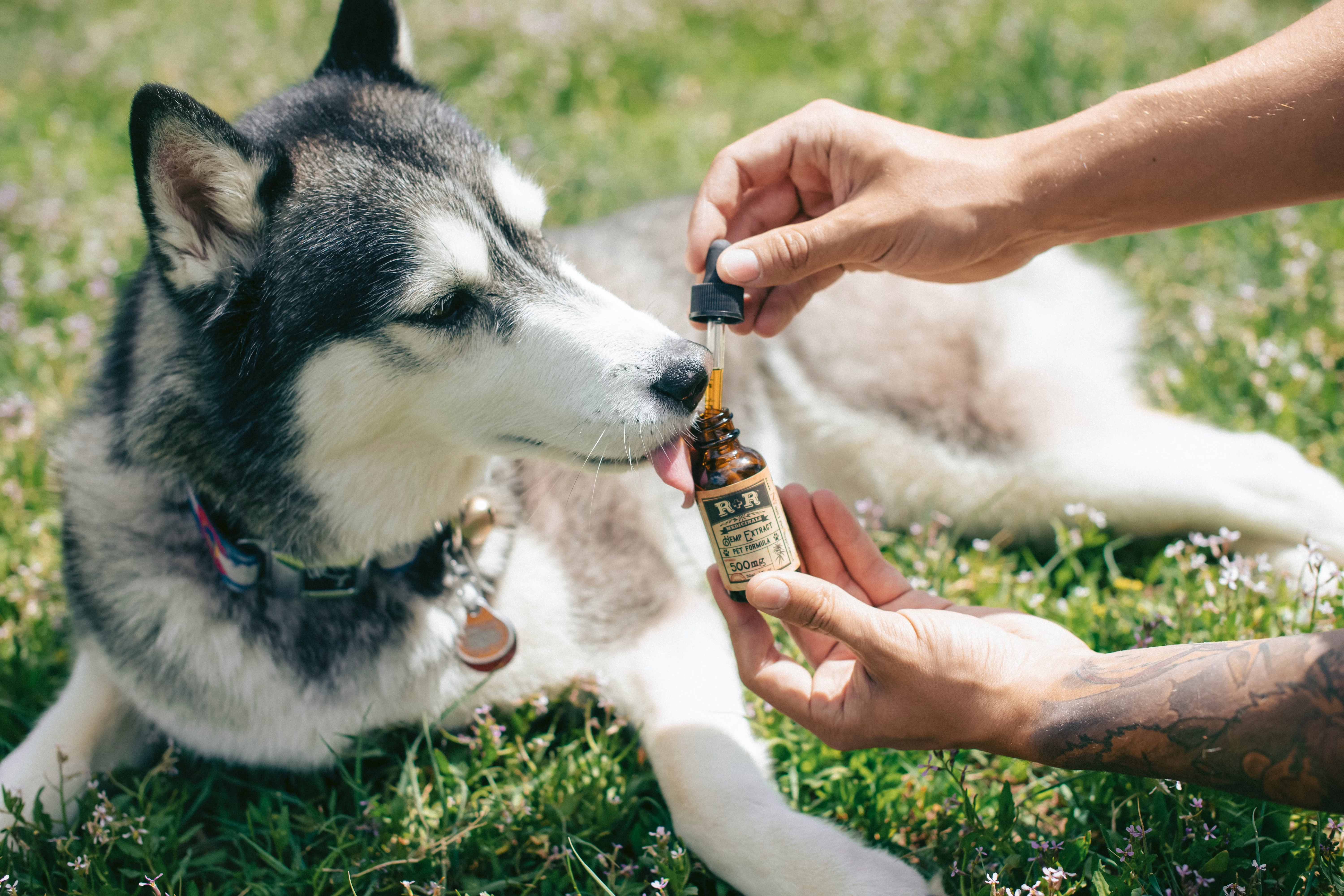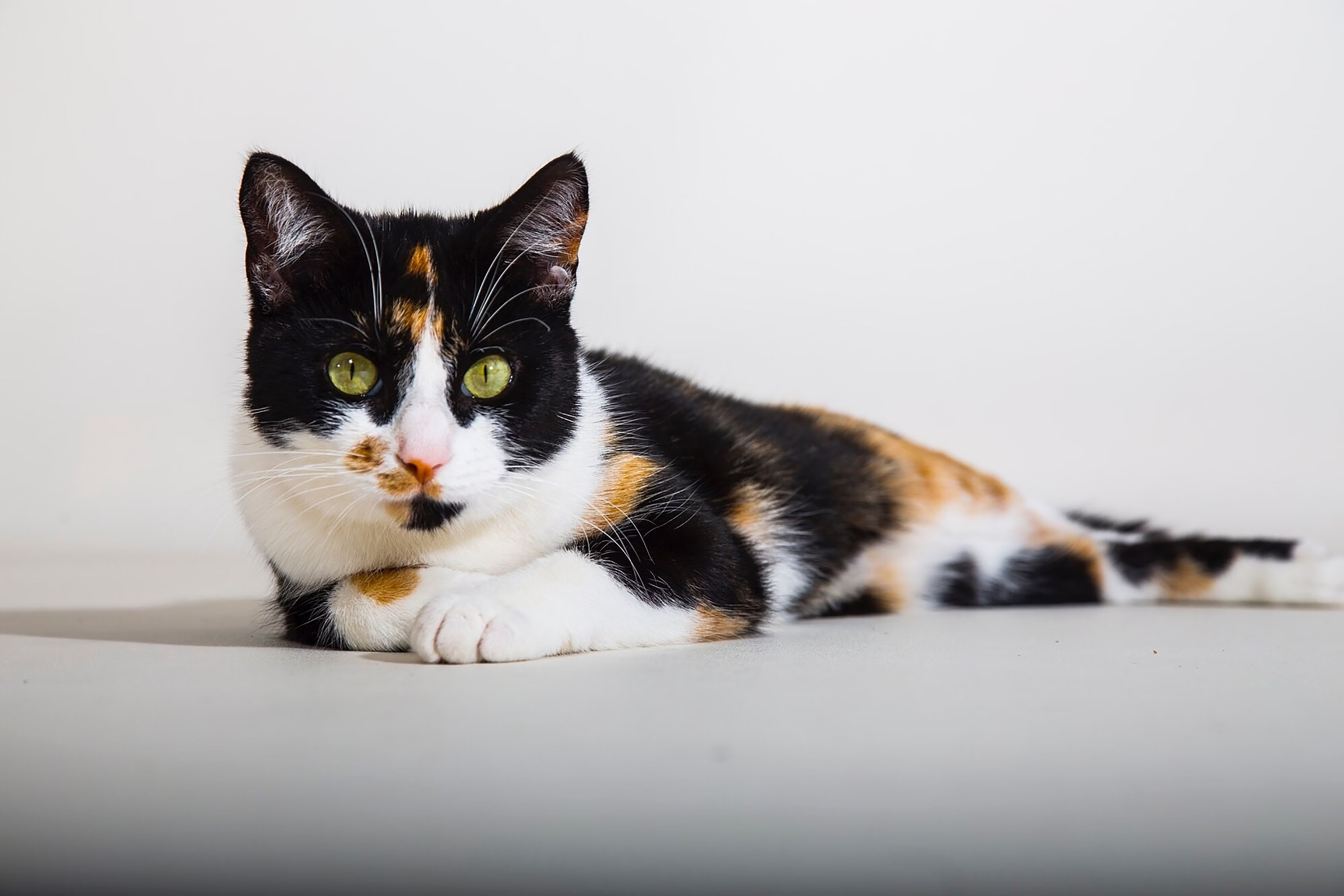Dogs and cats spend a lot of their time asleep. While many people struggle to get eight hours a night, our furry friends can rack up between 12-20 hours per day (depending on age, health, and other factors). So since so much of their time is dedicated to snoozing, it’s worth digging into their sleeping habits—and what they can tell you as a pet parent.
Cat sleeping habits
Cats have a type of nap named after them, so you know they take their sleep seriously. In fact, there are few things kitties like more than a soft, warm place to rest. Unlike adult humans, who might sneak in the occasional nap but get most of their sleep at night in one long stretch, cats sleep throughout the day and night. These cat naps can be as short as ten minutes or last as long as two hours. The time you’re most likely to find your cat awake, however, is before sunrise and after sunset. Their instincts as predators likely dictate this sleep cycle. Early morning is a good time to catch birds, and nighttime is the optimal window for catching rodents.
Dog sleeping habits
Adult dogs can spend about half the day asleep (with another chunk of time dedicated to relaxation). The number of hours they need to sleep varies by breed and lifestyle. Large breed dogs tend to sleep more than smaller breeds. And working dogs, who have to put in a full day herding sheep, pulling sleds, or performing other tasks, are used to being awake and alert for large parts of the day. Still, every dog will develop their own sleep schedule, which is often dictated by how often they need potty breaks. And while dogs do like to nap throughout the day, they are also likely to sleep for long stretches at night.
Is there such a thing as too much sleep?
Sleep is important for overall health and is how pets recharge after working, playing, or just hanging with their humans. Puppies and kittens need more sleep than adult pets. And as pets enter their senior years, they need more sleep to recover from the day’s activities. Still, there can be too much of a good thing. If you notice significant differences in your pet’s sleep patterns or the amount of time they spend asleep, it could be a sign of an underlying issue. Pain, infection, diabetes, thyroid issues, poisoning, anxiety, and other health concerns can all cause a pet to sleep more.
If your pet is sleeping through mealtimes, reluctant to get up in the morning, showing signs of physical discomfort, or exhibiting a change in overall personality or disposition, it’s worth checking in with your veterinarian.

Decoding sleeping positions
If you have pets, you’ve probably found them sleeping in many different positions—all of which appear comfy and adorable. But there’s also a method to the madness. Animals in the wild curl up in a ball to sleep to stay warm and protect their organs should they be attacked. While indoor pets are unlikely to face a threat while sleeping, curling up is instinctual. On the flip side, when a dog or cat sleeps on their back or side, where their belly is exposed, it’s a sign they feel safe and comfortable. It’s also a sign that they’re warm, as this position is a way of releasing heat from their bodies.
When a cat sleeps with their paws tucked under them and their head up, they can keep their organs safe and their body warm but also move quickly if they find themselves in danger. Similarly, dogs sleeping on their stomachs with their legs sprawled out can catch some z’s but still spring into action if the need arises.
And you’ve surely noticed that many cats prefer to sleep on high perches and in cardboard boxes. Both of these options help a cat feel safe from predators. And high locations like cabinets and bookcases have the added advantage of providing a bird’s eye view of a cat’s surroundings.
Should you share a bed with your pet?
There are pros and potential cons to sleeping alongside your dog or cat. On the plus side, research has shown that sleeping near pets can increase the flow of oxytocin (a.k.a. the "love hormone") to the brain, which can help alleviate depression. Sleeping with a pet has also been reported to reduce anxiety, make people feel safer, and strengthen the pet-person bond. And exposure to the allergens carried by pets may make people (specifically young children) less likely to develop allergies later in life.
However, there are some possible downsides to sleeping with a pet. For example, if you suffer from pet allergies, having a dog or cat in your bed will increase your exposure to dander, which is the culprit behind allergy symptoms. Another common concern about pets in bed is their potential to interfere with sleep. Even small pets can be bed hogs, and their movements can prevent a person from falling asleep or wake them up in the middle of the night. A dog or cat can also bring harmful bacteria, parasites, or viruses into the house, which could spread to people. However, this is a concern regardless of whether a pet sleeps in your bed, and that is why vaccines, parasite prevention, and regular veterinary care are so important.




